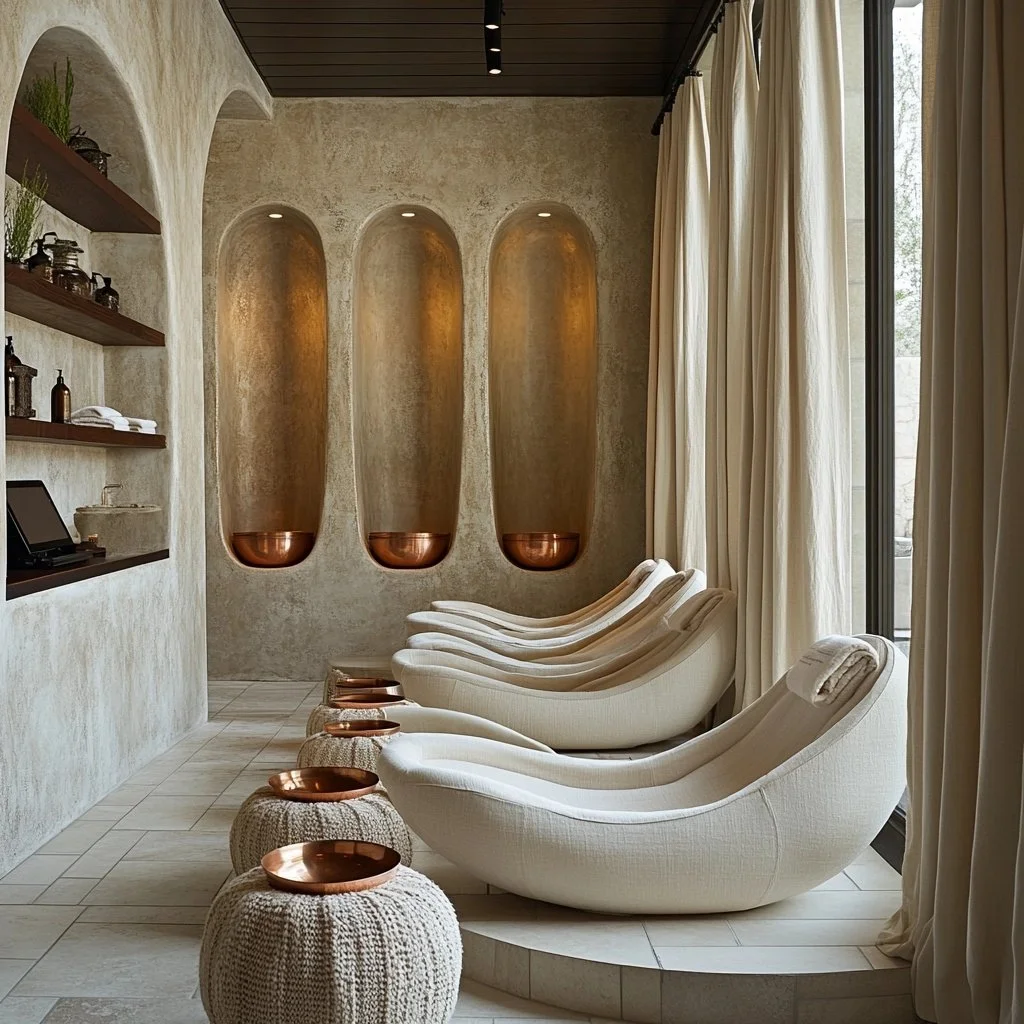Designing for the Senses: How Spa Interiors Use Psychology to Create Calm

Creating a spa that feels like a sanctuary isn’t just about beautiful finishes — it’s about understanding the deep psychological connection between space, color, materials, and emotion. At Living Bright Interiors, we specialize in designing spaces that feel as good as they look. And when it comes to spa design, every square inch matters.
Here’s how we curated a multi-sensory design strategy for Haven Head Spa — a luxurious, organic-modern space that’s rooted in budget-friendly innovation and backed by deep research into interior psychology.
1. Space Matters: Designing Flow for Relaxation
One of the most overlooked parts of spa design is the layout. Our research shows that guests begin to relax the moment they enter — if the space is designed to support that response.
We recommend:
A 6–8 ft. decompression zone at the entrance for visual calm and orientation.
Clear, open pathways of at least 36"–42" between stations.
Designated zones for prep, service, and reset without visual clutter.
This ensures both guests and staff feel supported, not rushed or boxed in.

2. Texture & Materials: Creating Calm Through Touch and Sight
We used fluted wood paneling, linen drapery, copper soaking bowls, and woven ottomans throughout Haven Head Spa to create natural rhythm and tactile softness.
According to cognitive psychology, humans respond positively to natural materials. Surfaces like:
Wood grain (grounding + familiar)
Woven fibers (inviting + earthy)
Brushed metals like copper (warm + luxurious)
…all stimulate the nervous system in a way that reduces anxiety and promotes focus.
3. Color Psychology in Spa Design
Every shade in Haven was chosen with intention:
Matte black offers visual gravity and clarity
Sage green supports emotional healing and connection to nature
Creamy white + oat tones evoke comfort and warmth
Copper accents add energy without overstimulation
Color combinations like this activate the parasympathetic nervous system, which helps lower stress and promote calm.

4. Sensory Design = Elevated Guest Experience
We created a sensory experience in every zone of the spa:
Sound: Soft ambient music or trickling water near foot spas
Scent: Eucalyptus or lavender diffused at entry and treatment areas
Touch: Layered fabrics, warm blankets, textured ottomans
Sight: Curated lighting zones that balance dimmable overheads with soft glows
Function: Easy-access storage that hides tools but feels curated
This approach transforms a spa visit from a service into a ritual.
5. Budget Doesn’t Mean Basic: Smart DIY Design Hacks
We used affordable, high-impact materials to get the look without the price tag:
Fluted Pole Wrap on IKEA cabinets
Wall-mounted tablet consoles on live-edge wood
Plumbing pipe curtain rods for industrial-chic privacy
Peel-and-stick wood-look floors that mimic real oak
These hacks help small business owners achieve luxury on startup budgets — and the result is anything but basic.

Final Takeaway: It’s Not Just a Spa — It’s a Story
Whether you're creating a new wellness space or upgrading an existing one, your interior should tell a story. At Living Bright Interiors, we use design psychology to help businesses align their space with their mission.
If you’re a spa owner, solo esthetician, or wellness entrepreneur ready to elevate your environment, let’s collaborate.
Pin-worthy Design. Science-backed calm. That’s Living Bright.
Contact us for virtual design, AI-enhanced rendering packages, or full-service sensory styling.





















































































































































































